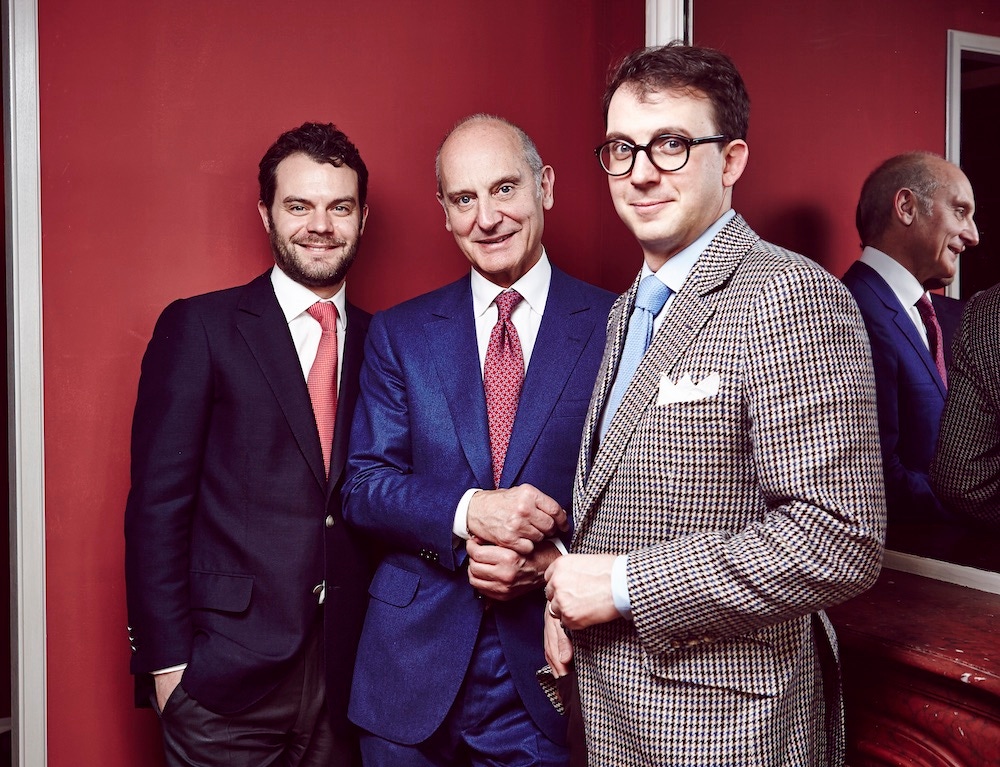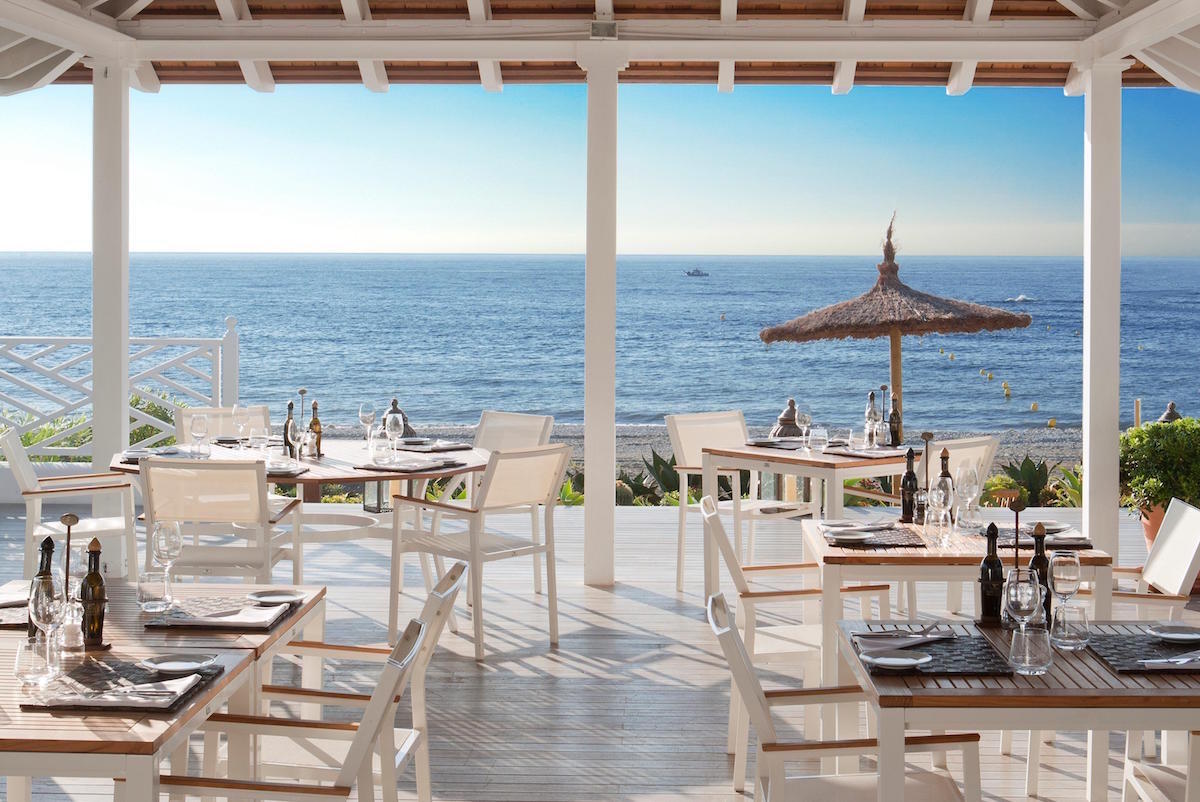Martin Kemp: Words of Wisdom
If you want your Lamborghini brought to your bedroom or a bath installed on your plane, Martin Kemp, an interior designer to the global super-rich, can make it happen…

There’s seemingly no request, big or small, that Martin Kemp can’t fulfil. In fact, the interior designer relishes a challenge, and having worked with some of the most esteemed in the business, including Barbara Barry in Los Angeles and Candy & Candy in London, Kemp is more than qualified to take on the biggest. The Welsh designer spent 30 years working on retail and commercial properties before establishing his own business, Martin Kemp Design, which now works with private clients around the world. He travels from the Bahamas to Saint-Tropez conjuring up creative concepts for anything from cosy lounges to grand super-yachts and luxurious private jets. We caught up with him recently to pick his brains on his career, Los Angeles, and all things design...
By misfortune, which turned out to be good fortune for me, a former client’s house caught fire and ended up very badly damaged. It was one of the biggest house fires in central London. Soon after I received the call enquiring if I would be interested in restoring it, so that became my first solo project.
I don’t really have an aesthetic. If someone views my website and then visits my studio, they might well associate the two - which is probably a masculine, polished, smart, contemporary look. However, much of our private work, which we don’t publish on the website, is very different. We have delivered very elegant, feminine floral homes for clients with a very specific brief who largely come to us based on reputation or word of mouth.
Designing interiors for planes and boats is different to houses, largely because weight is a major issue, particularly with planes as it affects safety, as well as performance. The materials we use on planes are invariably honeycomb-backed, such as stone veneer. That’s before we confront fire restrictions: if an owner wishes to charter their plane, which many of them do, we have to abide by civil aviation fire safety and accident safety standards – for example a 12-second vertical burn test. With both yachts and jets we avoid sharp corners for obvious reasons : if the boat pitches we don’t want clients to graze their leg or bump their head. So designs are smooth, with soft, rounded edges, and firmly fixed in place. You don’t have swinging chandeliers on boats, they need to be rigid. Whereas with a home, you’re free to do whatever you want - obviously there are building regulations, but in terms of finishes, it’s unrestricted.
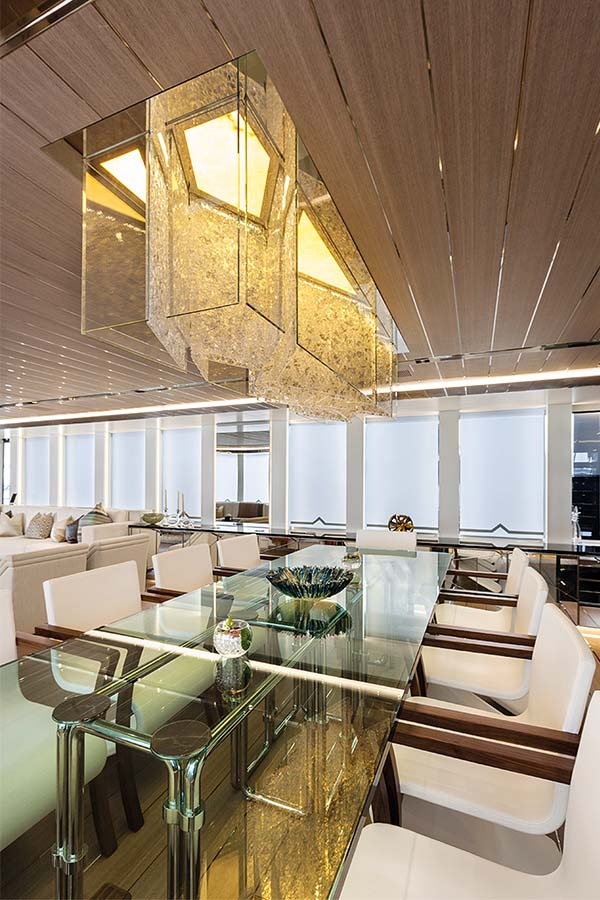
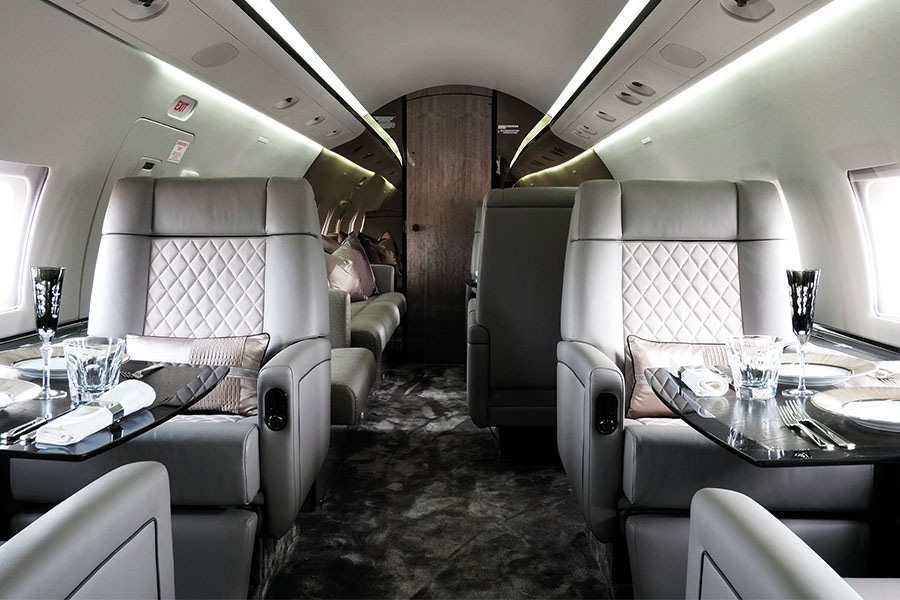
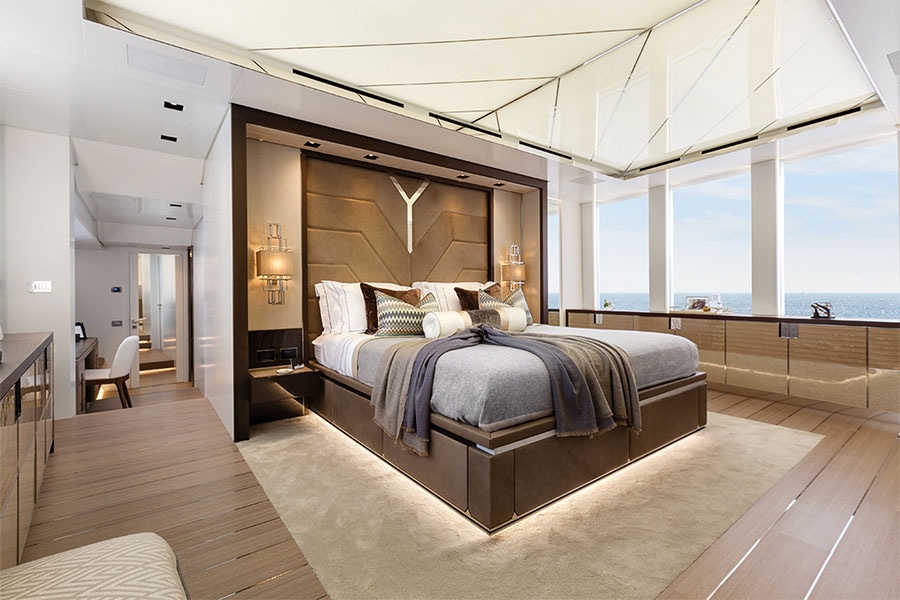
The project I’m working on now is probably one of my most ambitious to date because of its level of detail. I’m building a spectacular house in the French Alps, and the client’s brief is to make sure that it is the most beautiful house of its type. It’s a huge chalet — 23,000 square feet — and the family have requested the very best, but also the most refined – which is often about being cautious and holding things back. It’s about creating a sublimely elegant, beautiful home. It has to blend with its surroundings and the architectural style of the neighbouring buildings.
I’m doing a project right now that is a Grade One listed mansion on The Mall, adjacent to Clarence House. The prestige and finish that’s demanded is extremely high of course. The house at the moment is in very poor condition, because it’s been uncared for and somewhat neglected. The owner wishes to restore it to its original magnificence with a contemporary twist, which will probably come with the furnishings. So we are researching Ionic and Corinthian column details, plaster moulding details, and what is correct for the period of the house. There’s also a hierarchy for the rooms: the ground and first floor would have had a lot more grandeur to them than the second, and so forth.
I don’t think you can tell someone’s personality from the way they decorate their home. Most of our clients have multiple homes. In the south of France, for example, they’ll enjoy white billowing curtains and floral upholstery, whereas in New York we’ll suggest a dramatic black and grey retreat. In London they’ll have a classical mansion, and in Argentina they’ll have a super-futuristic mountain retreat. I think it’s more to do with how you live within those environments as opposed to what those environments necessarily look like. We’re talking about families that are frequently moving. If they’re feeling like they want to be somewhere sunny, they’ll go to the sunny home. And it’s that house that’s soft and elegant and fluffy, and they can kick their slippers off and walk around barefoot in their pyjamas drinking tequila and orange juice. Whereas in New York, it’s roll-neck sweaters and tweed jackets.
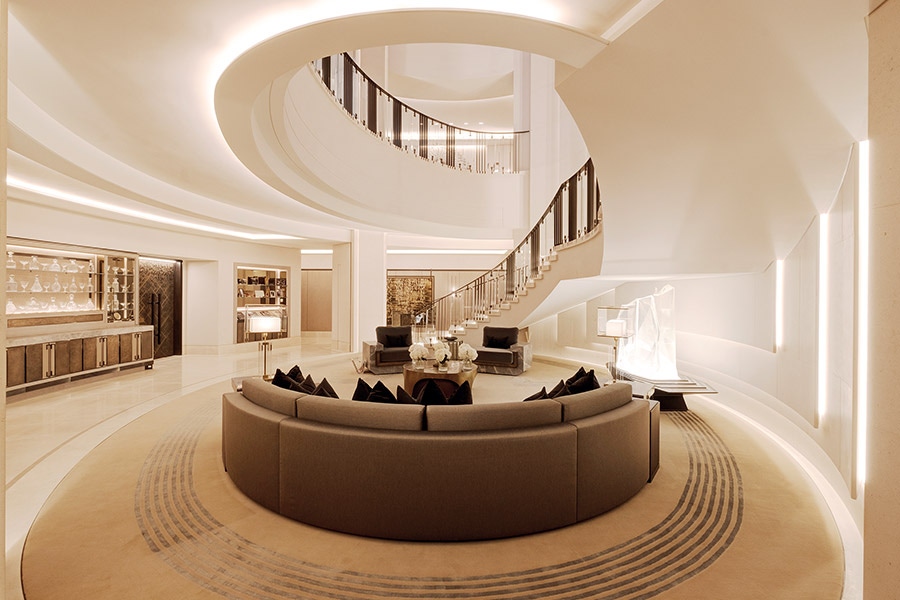
Design is not something where you can draw a line and say it starts here and stops there. It’s a very fluid industry and it’s important to be open-minded. Our clients are individuals asking for something for a reason. I’m not there to question, I’m there to analyse it, and sometimes I will challenge it, but I wouldn’t often doubt it. If a client asks for a black room in Monaco or Saint-Tropez, they want a black room in Monaco or Saint-Tropez. I would never question it though I might enquire about the reasoning. They might say that it reminds them of their youth when they were a New Romantic or Goth or something. And you think, that’s a fine reason. It’s about what stimulates, and design is there to respond to that.
One of the reasons I was attracted to Los Angeles was its outlook on life — the people and the way they live, it’s so much more relaxed and open-minded and unrestricted. I first started going there 30 years ago, and my mind was just opened. When you walk around Beverly Hills and West Hollywood, you see the most extraordinary architecture that you never see anywhere else, other than Japan, maybe. And you realise it’s possible to live like this and build these places in the heart of sophisticated cities. I would come home to London and think we’re so enveloped in this old historical design, which I respect, but I enjoy that contemporary outlook, too. I found Los Angeles to have a wonderful outlook and be a great stimulant. I always come back from there with a lively mind full of passion. You see such fun things.
Los Angeles is definitely my favourite city design-wise. But outside of that, Prague — you can’t not like Prague — and Seville. I just think it’s very beautiful and elegant, and the colouring of the stone is evocative of the past.
I once had a client who wanted his Lamborghini brought to his bedroom, in an elevator, so he could see it from his bed. He wanted to be able to get into it from his bed and go down and drive off. Another client wanted a bath on his plane, which is crazy because of the water pouring out, so we had to work out a way of doing it. It was done. These requests may seem ‘wow’ but working with projects like this a lot, it soon becomes taken for granted.
For the full interview, pick up Issue 63 of The Rake on newsstands now, or subscribe here.

